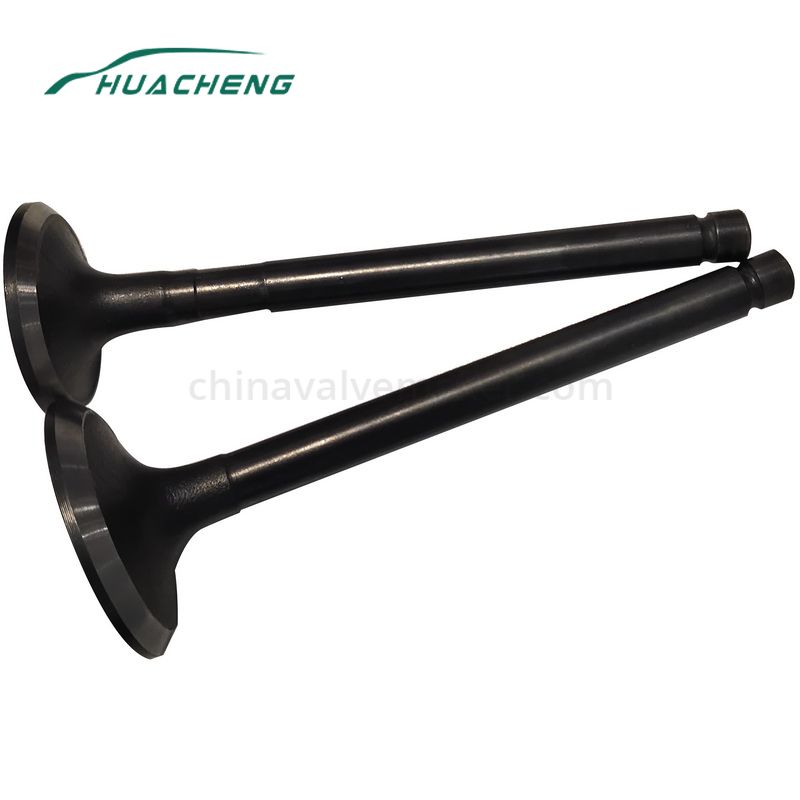Since the advent of the engine, people have not stopped making improvements to him, and we have also seen generations of new engines with various displacements from large to small. With the increase in vehicles, we ushered in a terrible energy crisis. , Oil, a non-renewable resource, is slowly exhausted by our daily excavation. As a contemporary, we do not consider energy issues or reserve some resources for the next generation. With our engineering efforts, we have developed a new type of energy-saving engine and brought more fuel-saving technologies. Today vehicle engine valve supplier will share with you the benefits of the variable valve timing system.
In addition to the throttle and turbine (or mechanical increase), the components that affect the air in the cylinder include valves.
Generally speaking, the variable valve includes several different kinds of variables: variable timing on the intake side, variable lift on the intake side, variable timing on the exhaust side, and variable lift on the exhaust side. Some engines have only one of them, and some engines have multiple of them at the same time. Therefore, the "variable intake" technology of different engines is not necessarily the same in terms of structure.
The working principle of a four-stroke gasoline engine that we are familiar with. The four working strokes of suction, pressure, work, exhaust, and the continuous cycle work of the engine have an inseparable effect on the opening and closing time of the throttle. Everyone knows that the valve is driven by the crankshaft of the engine through the camshaft, and the valve timing depends on the rotation angle of the camshaft. On an ordinary engine, the opening and closing time of the intake valve and exhaust valve are fixed. This fixed timing is difficult to take into account the working requirements of the engine at different speeds. We want to make the engine reach a higher Efficiency Usually we modify the α inclination angle of the camshaft to change the opening and closing time of the throttle to achieve the fastest work time to generate greater kinetic energy. Now we have variable valve timing to solve this more easily. Technology.

Variable valve timing technology is a simple structure and low-cost mechanism system in the entire variable valve timing technology. It uses hydraulic and gear transmission mechanisms to dynamically adjust valve timing according to the needs of the engine. Variable valve timing cannot change the duration of valve opening, but can only control the timing of opening or closing the valve in advance. At the same time, it cannot control the valve opening stroke like a variable camshaft, so it has a limited effect on improving the performance of the engine.
In terms of variable valve timing, the HONDA engine has a certain lead. When the engine is running at low load, the small piston is in the original position, and the three rocker arms are separated. The main cam and the secondary cam push the main rocker arm and the secondary rocker arm respectively. Control the opening and closing of the two intake valves, the valve lift is less, the situation is like an ordinary engine. Although the middle cam also pushes the middle rocker arm, because the rocker arms are separated, the other two rocker arms are not controlled by it, so the opening and closing state of the valve will not be affected.
But when the engine reaches a certain set high speed (for example, when the Honda S2000 sports car reaches 5500 rpm at 3500 rpm), the computer will instruct the solenoid valve to activate the hydraulic system and push the small piston in the rocker arm to make the three rocker arms are locked into one body and are driven by the middle cam together. Since the middle cam is higher than the other cams and has a larger lift. Vehicle parts engine valve is prolonged and the lift is also increased. When the engine speed drops to a certain set of low speeds, the hydraulic pressure in the rocker arm also decreases, the piston returns to its original position under the action of the return spring, and the three rocker arms separate.
In this way, you can control your fuel consumption at low speeds, and at the same time meet your needs for surging power output when the engine is at high speeds. The entire VTEC system is controlled by the engine main computer (ECU). The ECU receives and processes the parameters of the engine sensors (including speed, intake pressure, vehicle speed, water temperature, etc.), outputs corresponding control signals, and adjusts the rocker piston hydraulic system through solenoid valves So that the engine is controlled by different cams at different speeds, which affects the opening and time of the intake valve. So as to produce the power output you most hope to obtain.